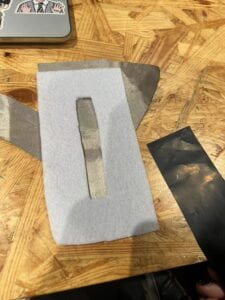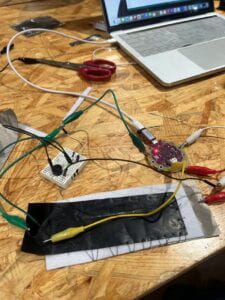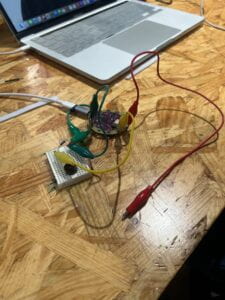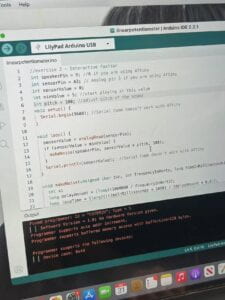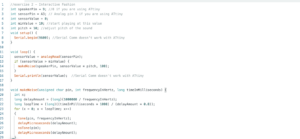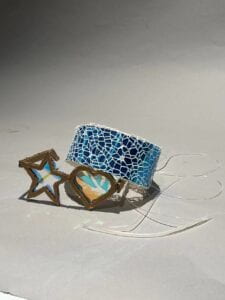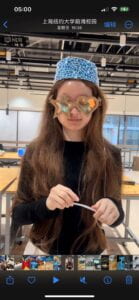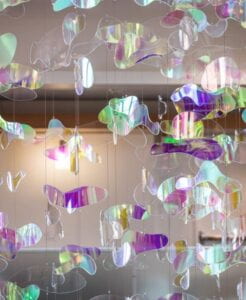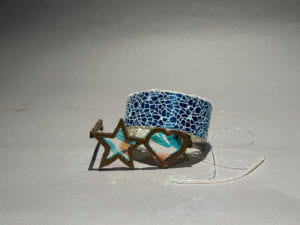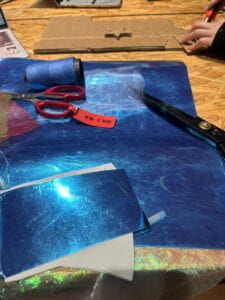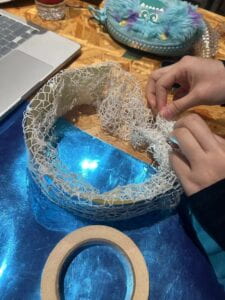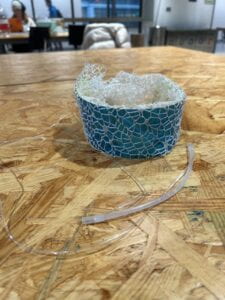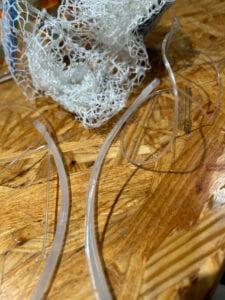After watching Paris is Burning and reading The Fashioned Body chapters listed below, post to the blog a reflection on the relationship between fashion and identity, but also gender, race, and class. You can also add your notes from the class discussion. Finally, write about the concept of your mask and how this relates to your understanding of identity and expression through fashion. Don’t forget to post photos or videos wearing it.
Reflection
Fashion is an expression of identity. “How we perform our identity has something to do with our location in the social world as members of particular groups, classes, cultural communities. The clothes we choose to wear represent a compromise between the demands of the social world, the milieu in which we belong, and our own individual desires”.
In the documentary Paris is Burning, the characters consider fashion as a tool for self-expression and identity formation. The ball culture in 1980s New York City provided a space for individuals to creatively construct and perform their identities through elaborate costumes, runway walks, and voguing. These performances were not merely about aesthetics but also served as acts of resistance against societal norms and discrimination. In the documentary, the character’s race and gender restrict them from ever achieving what they want, so they use fashion as fantasy. Their desire is clearly shown through what they wear.
In our class discussion, we talked about whether fashion is performance. I would say that fashion is indeed a performance of our identity. What we wear shows other people the information we want to convey. In the documentary, participants will choose different attires for different personas in competition. They perform different characters through fashion, which also helps to build their confidence. I also remember the concept of “real” in the documentary, which seems to be similar to “authenticity” mentioned in the reading, however, it is in fact opposite. Their being “real” is their compromise to the real world. The participants in the ball pay attention also to artifice in their presentation of self to catch people’s eyes. What they wear also indicates fashion’s relationship with class and social status, as stated in the reading(143). Class is clearly visible through different styles of clothing. Although the boundaries are gradually blurring, clothing still serves as a powerful marker of social divisions.
In terms of gender, nowadays gender-neutral fashion challenges traditional norms and offers new possibilities for self-expression beyond binary constructs. I also have many gender-neutral clothing. As a girl hiphop dancer, which was traditionally dominated by men, women dress exactly the same as men to better fit into the culture.
Mask
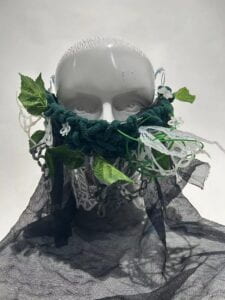
Concept
This mask empowers women to break free from the constraints. What we want to express through this mask is that we feel constantly strained by different types of responsibility and stereotypes in society, but we want wearers to be encouraged to break free of the chains and embrace new opportunities.
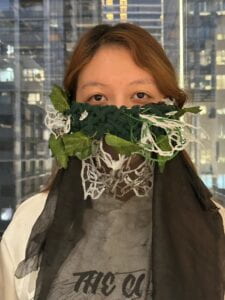
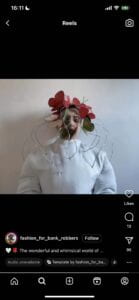
We gained inspiration from the work above and wanted to explore the butterfly’s symbolization. At first, we wanted to create a pupa with woolen yarn to make a headset.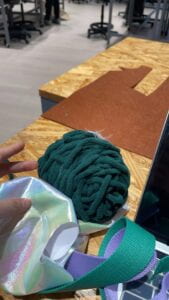
However, the experiment was not successful, so we moved to another type of mask.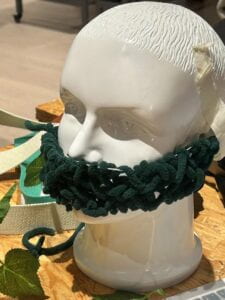
The green wollen yarns represent the thistles and thorns, the struggle.
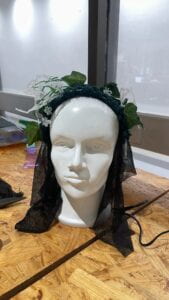
This was the first prototype, but it was more like an adornment instead of a mask.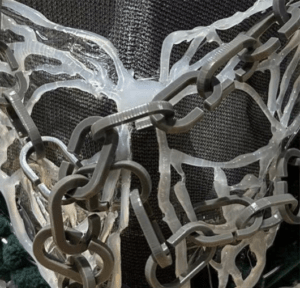
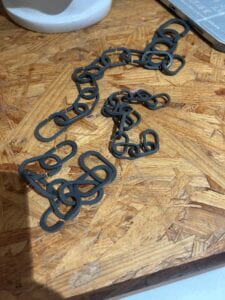
We used hot glue to create butterflies and tangled them with chains, which represent the constraints. However, we placed it below to show these constraints can be overcome.
The leaves around the butterflies indicate empowerment. They are symbols of self-discovery and growth.
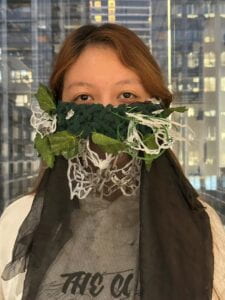
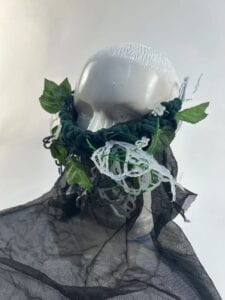
Fashion serves as a powerful means of self-expression and identity. This mask not only acknowledges the weight of societal expectations but also encourages wearers to embrace their authenticity and pursue new opportunities.
Reference
Entwistle, Joanne (2000) ‘Fashion and Identity’ in: The Fashioned Body. Cambridge: Polity Press
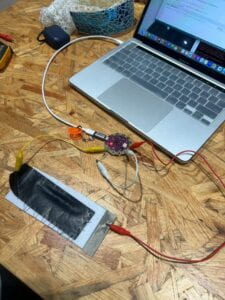
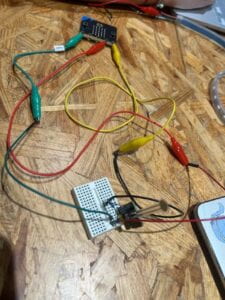
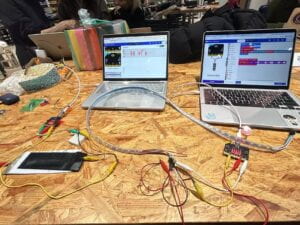
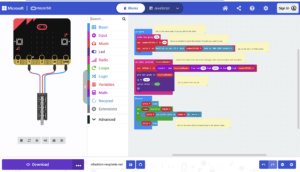
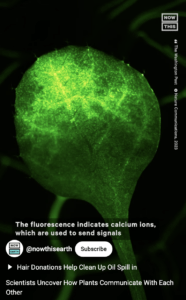 For example, I can explore temperature-sensitive materials or sensors that can change color or the color of the LEDs based on the wearer's body temperature. The change of the LEDs or Neopixels can also result from the change in pressure, speed, etc.
Other interesting communication forms
Drawing from the concept of gaze-following behavior observed in animals, the wearable could feature embedded sensors or cameras that track the wearer's gaze direction. This information could be used to trigger interactive responses within the device or to communicate with external devices or systems.
An example is Caress of the Gaze by Behnaz Farahi
For example, I can explore temperature-sensitive materials or sensors that can change color or the color of the LEDs based on the wearer's body temperature. The change of the LEDs or Neopixels can also result from the change in pressure, speed, etc.
Other interesting communication forms
Drawing from the concept of gaze-following behavior observed in animals, the wearable could feature embedded sensors or cameras that track the wearer's gaze direction. This information could be used to trigger interactive responses within the device or to communicate with external devices or systems.
An example is Caress of the Gaze by Behnaz Farahi
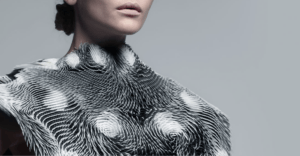 Another interesting form is to explore bio-inspired sound communication. The wearable could contain small speakers, actuators, or motors that emit sounds mimicking those of animals or natural environments. Users could control these sounds through gestures or voice commands.
These communication forms inspired my idea of making wearables incorporating rubbing specialized body parts together and vibration to produce sounds like arthropods. I often encounter situations when I don't want to open my mouth to speak a word but want to convey the message of rejection or happiness. Previously these were shown by my eyes, but I want to explore how they can be conveyed through the frictions of different fabrics and motors. For example, motors can be connected to fabric and when feel pressure detected by pressure sensor or heartrate sensor, the motor will lead the fabric to move and produce sound. Adding color and light signals to these is also preferrable.
Another interesting form is to explore bio-inspired sound communication. The wearable could contain small speakers, actuators, or motors that emit sounds mimicking those of animals or natural environments. Users could control these sounds through gestures or voice commands.
These communication forms inspired my idea of making wearables incorporating rubbing specialized body parts together and vibration to produce sounds like arthropods. I often encounter situations when I don't want to open my mouth to speak a word but want to convey the message of rejection or happiness. Previously these were shown by my eyes, but I want to explore how they can be conveyed through the frictions of different fabrics and motors. For example, motors can be connected to fabric and when feel pressure detected by pressure sensor or heartrate sensor, the motor will lead the fabric to move and produce sound. Adding color and light signals to these is also preferrable.
